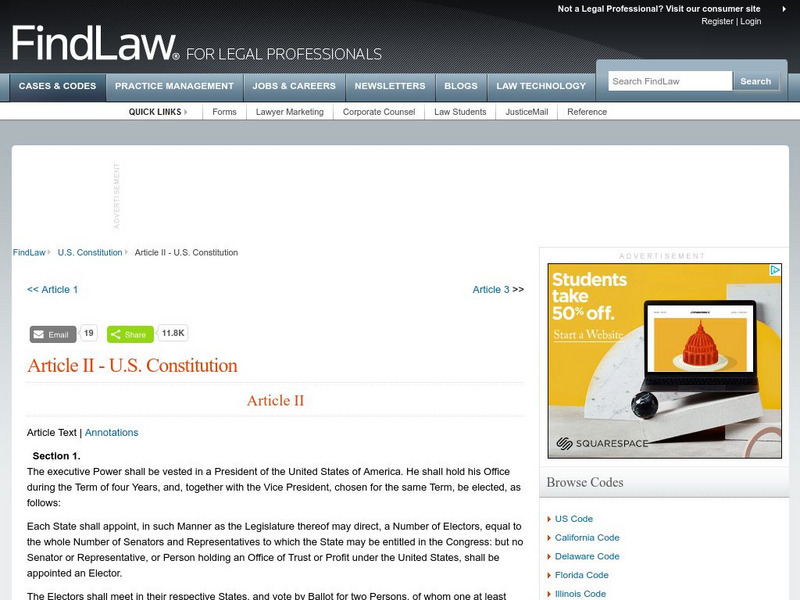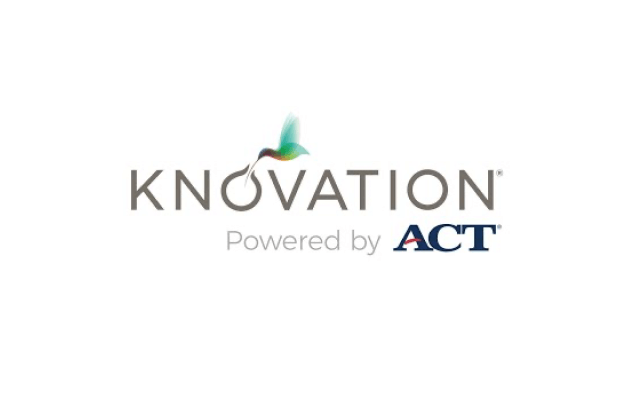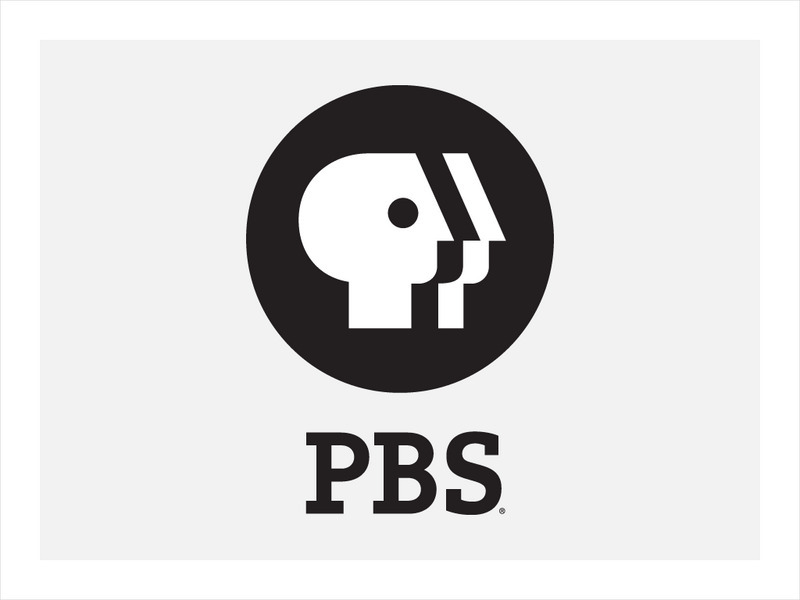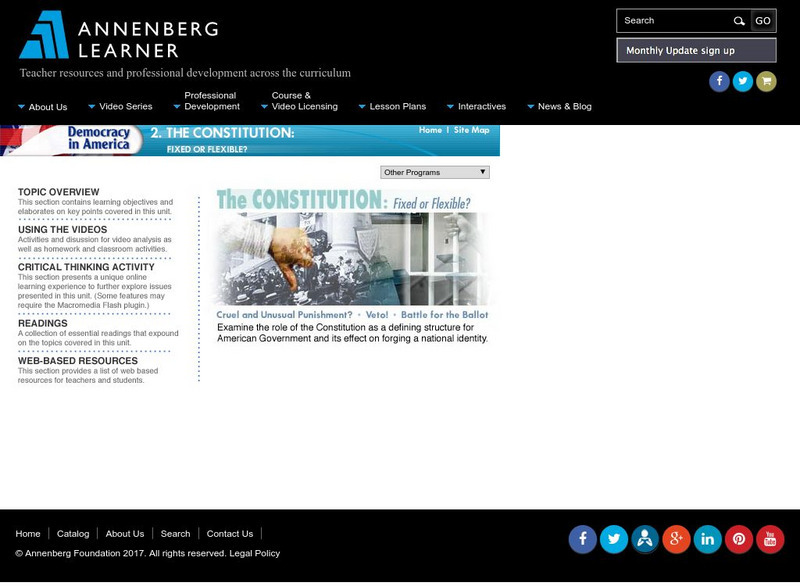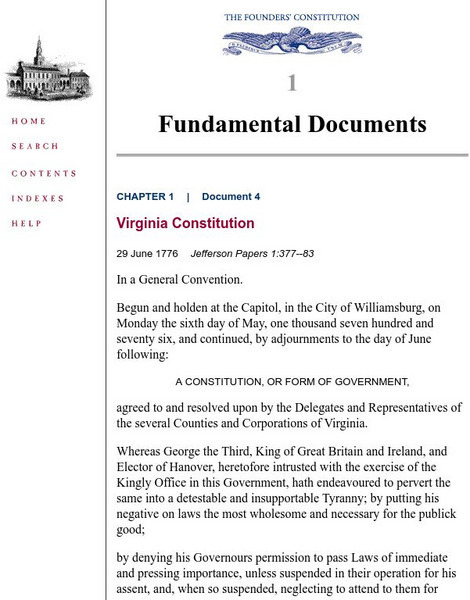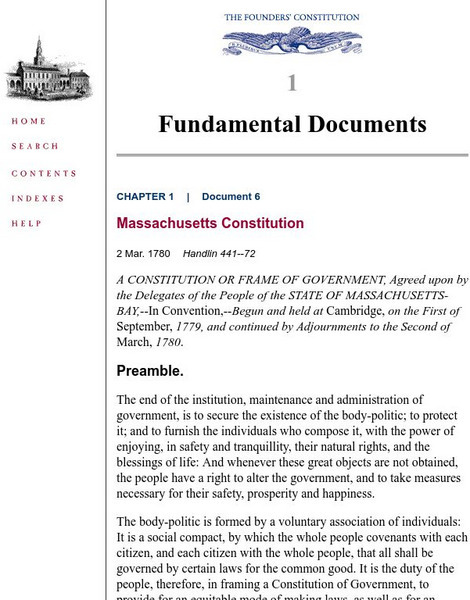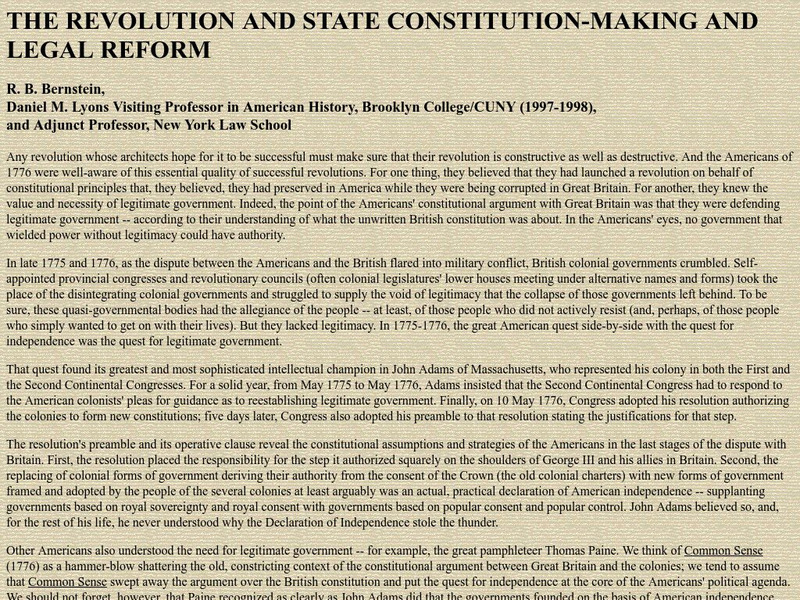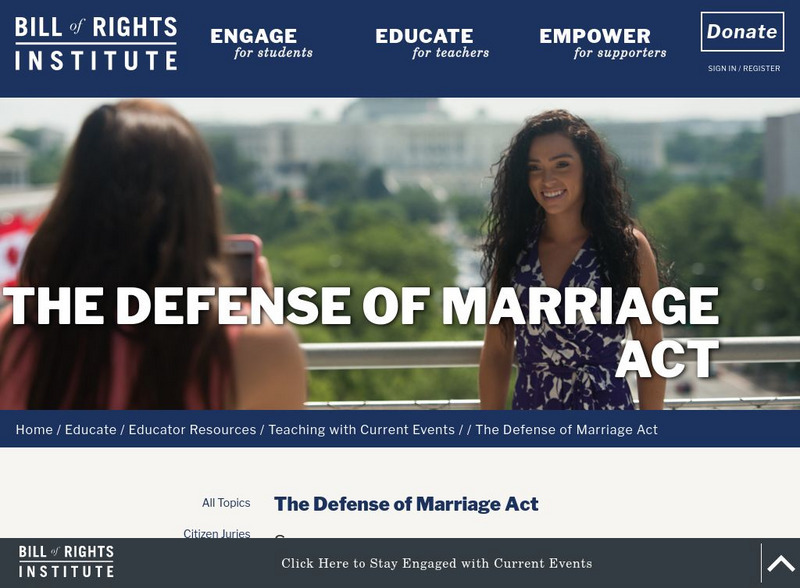Thomson Reuters
Find Law: United States Constitution: Article Ii
Full text of Article II from the U.S. Constitution, as well as detailed annotations that explain the reasoning and subsequent impact of each clause and section of the Article. Content explores everything from the nature and scope of...
Harry S. Truman Library and Museum
Harry S. Truman Library & Museum: Three Branches of Government
Interactive teaching unit for Grades 5-8 that helps to explain the three branches of government and the the balance of power. Topics covered include balance of government, how a bill becomes a law, the amendment process, the Legislative...
PBS
Pbs: The President's Cabinet: Choosing the Right Members (Lesson Plan)
A lesson that involves students in explaining the confirmation process of presidential appointees by testing the system of checks and balances and the separation of powers. The lesson also requires students to simulate the confirmation...
Illinois Institute of Technology
Oyez: Schechter Poultry Corp. V. United States (1935)
This U.S. Supreme Court case declared the National Industrial Recovery Act (NIRA) of the New Deal illegal because of the issue of separation of powers. The 'Case Basics' links have documents and more information from the court case.
Harry S. Truman Library and Museum
Harry S. Truman Library & Museum: Checks and Balances
Descriptions of the separate powers and functions of the three branches of the federal government. Site explains how the powers of one branch check and balance those of another.
Bill of Rights Institute
Bill of Rights Institute: Constitutional Principles
James Madison knew that a key challenge of maintaining just government was framing it in such a way that the government would be forced to control itself. How does a system of separated powers-and the checks and balances built into those...
Digital History
Digital History: Compromises
Compromise was the name of the game when writing the Constitution. See how taxation, elections, and the power of the federal government were enshrined in the document. Marvel at the ideas that were rejected.
US Government Publishing Office
Ben's Guide to u.s. Government: Learning Adventures: Branches of Government
Introduction to a learning adventure on the Constitution and branches of government. Students click on their age group icon to find information on which part of the Constitution spells out the powers of legislative, executive and...
University of Groningen
American History: Outlines: The Federal Court System
Discussion of the structure, purpose, powers and Constitutional safeguards of the Federal Court System.
US Government Publishing Office
Ben's Guide to u.s. Government: Branches of Government
Students will visualize how the Constitution organized our 3 branches of government and the role each plays in our government. This infographic breaks down the powers of each branch and shows how they perform checks on the other...
PBS
Wnet: Thirteen: The Supreme Court: Landmark Cases: Schechter v. u.s. (1935)
PBS provides details on the landmark Supreme Court case of Schechter v. U.S. which dealt with congressional powers under the Commerce Clause.
iCivics
I Civics: Limiting Government
Explore the five basic limits on government through the true story of Peruvian president Alberto Fujimori, and other fictional cases of government power gone wild.
ClassFlow
Class Flow: Challenges Faced by the New Nation
[Free Registration/Login Required] This unit covers the content area featuring the challenges faced by the new nation including the writing of the Constitution, government powers, the Bill of Rights and the War of 1812.
Indiana University
Center on Congress: Learn About Congress
Learn about the role of the US Congress, how it works, its history, and the principles behind its creation and operation. Wonderful set of resources including FAQs, short articles and video clips, "interactive learning modules" (i.e., a...
Annenberg Foundation
Annenberg Learner: Democracy in America: The Constitution: Fixed or Flexible?
This unit explores the timeless qualities of The U.S. Constitution, the opportunities to amend it, and how it is a pillar of the American identity, through these activities, videos, and outside resources.
US National Archives
National Archives: The Constitution in Action: Article Ii
This activity can be used during a unit on the U.S. Constitution. Students will analyze the Senate Journal of the First Congress and identify how the document demonstrates content contained within Article II of the Constitution in...
PBS
Pbs: How the Supreme Court Affects the Lives of Teens (Lesson Plan)
Objectives for this lesson include describing the structure and function of the Supreme Court, looking at important decisions, and discussing recent rulings and issues.
University of Chicago
The Founders' Constitution: Virginia Constitution: 29 June 1776
The complete original text of the revolutionary state constitution of Virginia adopted in June 1776.
University of Chicago
The Founders' Constitution: Massachusetts Constitution: 2 March 1780
The complete, original text of the Massachusetts State Constitution as adopted in March, 1780.
Michigan State University
Michigan State University: American Revolution: Revolution and State Constitution Making
A full-length essay on the formation of new state constitutions by the 13 newly independent states.
The White House
The White House: Our Government
Overviews of the major elements of U.S. government, compiled and published by the White House: three branches of the federal government (executive, legislative, judicial), the Constitution, federal agencies and commissions, elections and...
US Government Publishing Office
Ben's Guide to u.s. Government: Constitution of the United States
Find background information on the Constitution of the United States of America, and learn the three basic principles upon which the Constitution was written. Additional content includes a look at the text of the Constitution, the events...
Bill of Rights Institute
Bill of Rights Institute: The Defense of Marriage Act
A lesson plan addressing what happens when Congress passes a law or an act, but the law is unconstitutional.
CPALMS
Florida State University Cpalms: Florida Students: Enlightenment Ideas and the Founding Fathers
A tutorial that looks at the ideas from the Enlightenment that influenced the Founding Fathers, particularly those of John Locke and Montesquieu. A PDF file of the tutorial is available.
Other popular searches
- Separation of Powers Game
- Civics Separation of Powers
- The Separation of Powers
- 6th Grade Separation of Powers


